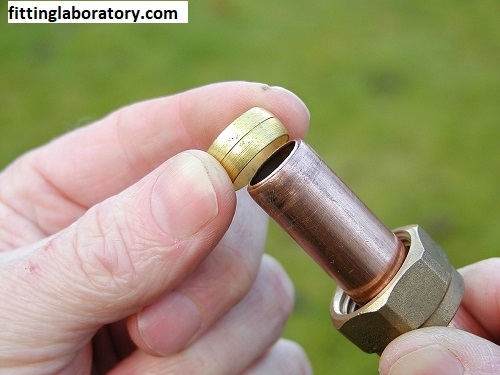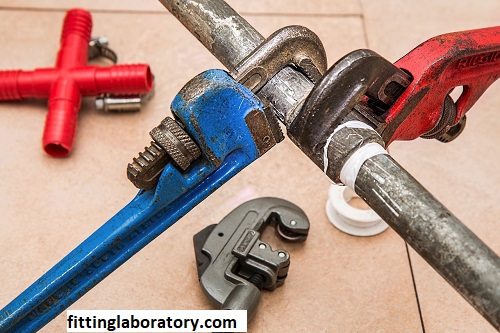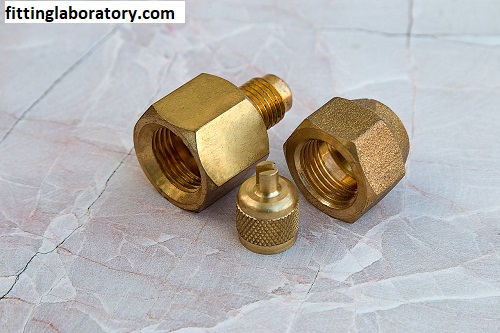Plumbing Fittings: A Comprehensive Guide
Brass Plumbing:
Brass plumbing fittings are integral parts of both domestic and commercial plumbing systems. A perfect blend of durability, corrosion resistance, and strength, brass fittings have been used for many decades in different plumbing applications. This article examines what brass plumbing fittings are, their benefits, their types, and their uses. Apart from this, we will analyze how they compare with other materials, care, maintenance tips, and some common concerns when choosing brass plumbing fittings for systems. Finally, we will answer some of the most frequently asked questions about brass plumbing fittings.

What are Brass Plumbing Fittings?
Brass Plumbing:
Brass plumbing fittings are plumbing components made from a combination of copper and zinc. Its characteristic color is the alloy. The combination of the metals provides brass with the characteristics for application in plumbing systems by offering it high strength, resistance to corrosion, and ease of shaping into forms such as tubes, channels, and pipes. Brass fittings connect, govern, or regulate the flow of water, gas, and other liquids in pipes and plumbing systems.
Composition of Brass:
Brass: It is a zinc-copper alloy. Other metals, for instance, lead, tin, or manganese, are often added to brass to improve specific properties. The composition of brass may differ depending on the requirements; however, it would typically be this in brass:
- Copper: 70-90%; The primary metal in brass is copper, which provides an alloy of malleability, corrosion resistance, and heat conductivity.
- Zinc (10-30%): Zinc has the effect of strength and corrosion resistance. Brass is also easy to machine and cast into fittings.
- Trace Elements: Small proportions of lead, tin, or other metals may be added for enhanced machinability, ductility, or durability.
Types of Brass Plumbing Fittings
There are several types of brass plumbing fittings for different needs and purposes. The most common types are:
Elbow Fittings:
Brass Plumbing:
Brass elbows – A brass elbow is a fitting that allows a 90° change in a plumbing pipe direction. The turn can be of any angle, from 45° to a custom size. Tee fittings are available in two configurations, street elbows and regular elbows. A street elbow has one male threaded end and one female threaded end, while a regular elbow has two female threaded ends.
Tee fittings connect three pipes typically in a “T” shape and permit the flow of liquid from one pipe to another. Tee fittings are widely used in plumbing systems to branch off water supplies to various parts of a building.
Couplings:
Couplings Couplings are normally used to join two lengths of pipe together. Brass couplings are available with either threaded or slip-on and come in many different lengths to suit an application. They are most commonly used when pipes must be extended or repaired.
Adapters:
Brass adapters are used for connecting pipes of disparate materials, such as joining copper to PVC or threaded to non-threaded piping. They are common in systems where materials are mixed.
Nipple Fittings:
Brass Plumbing:
Brass Nipples are short lengths of pipe with male threads on both ends. It can be used in a plumbing system where the a need for a short extension to extend a pipe or connect two other fittings.
Caps and Plugs:
Brass caps and plugs seal the end of a pipe temporarily or permanently. Caps cover the end of the pipe, while plugs fit into the pipe, which could either be threaded or non-threaded.
Union Fittings:
A union allows for the easy connection and disconnection of two pipes; they are mainly used when regular maintenance or repairs might be needed.
Check Valves:
These brass check valves allow fluids to flow only in one direction while preventing backflow. Such check valves are pretty basic in a plumbing system to safeguard the quality of water from contamination.
Common Uses of Brass Plumbing Fittings:
Brass Plumbing:
There are many common uses wherein brass plumbing fittings can be used, varying from household plumbing to industrial and commercial setups. Some popular applications include:
- Brass fittings: were extensively applied to the domestic water supply application, including such fittings faucets, showerheads, and hose bibs. Brass is mainly used in heating systems.
- Gas supply: As brass possesses considerable resistance to corrosion and pressure, it is commonly used for gas lines.
- Industrial hydraulic systems: Brass is provided to offer strong and leakage-proof joints in hydraulic systems in industrial applications.
- Marine plumbing: Brass is a corrosion-resistant material, thereby making it ideal for plumbing fittings that will be placed within any type of marine installation, otherwise, saltwater could ruin them.
Benefits of Brass Plumbing Fittings:
Brass Plumbing:
There are some benefits of brass plumbing fittings which, therefore, make it so well sought after by plumbers and homeowners. Here is a list of some of the key benefits:
1. Reliability
Brass is strong and has an extended life. It can withstand stresses, temperature variations, and constant exposure to use Brass plumbing fittings are also resistant to breakage and wear due to impact, which makes them ideal for systems that undergo heavy utilization.
2. Resistance to Corrosion
Brass is inherently corrosion resistant, especially in the case of water predominant. Unlike many other metals, brass does not rust, like steel or iron for instance. The corrosion-resistant characteristic, therefore, makes the brass fittings resistant to the raging elements and water; a characteristic which, for a plumbing system, puts it as suitable for perpetuation.

3. Facile Malleability and Machining
It is also quite malleable. It can take many forms of fittings-from simple couplings to intricate valves. Thus, brass fittings are more accessible for manufacturing and are easy to customize for specific plumbing purposes.
4. Aesthetic Appearance
Brass fittings have a golden appearance. This makes them look aesthetically pleasing. That is why brass pipe fittings are ideal for those applications where plumbing has to be exposed, in semi-exposed pipe systems, and all kinds of decorative plumbing fixtures.
5. Non-Toxic
Brass fittings are non-toxic, thus qualifying the use of this component in potable water systems without posing a hazard to human health. Many materials may leach chemicals or metals that are harmful, and brass does not present any health-related problems in applications with water supplies.
6. Compatibility with Other Materials
Brass fittings are quite flexible and can be used with several piping materials, such as copper, steel, and PVC. This makes them ideal for those situations where more than one type of pipe has to be connected.
Brass Plumbing Fittings vs. Other Materials:
Brass Plumbing:
Brass plumbing fittings are often considered against the different common materials used in plumbing, such as copper, PVC, and stainless steel. Here’s a comparison of brass fittings against these materials:
Brass and Copper
Brass and copper are other popular materials used in plumbing fittings. They share numerous similar properties, including resistance to corrosion and durability. Still, brass will be preferred over copper because brass can easily withstand any form of cracking more than copper, and it is more expensive than brass; thus, brass emerges to be more economical for many applications.
Brass and PVC
PVC fittings are lightweight, cheap, and more or less easy to install; however, they are not as strong and heat-resistant as brass fittings. Also, PVC is not more resistant to UV damage and tends to become brittle with time when exposed to sunlight. It contrasts with brass which is much more resistant to damage and also endures high temperatures as well. Brass fittings have highly resistant power to most chemicals.
Brass vs. Stainless Steel
Brass plumbing fittings are very strong and anticorrosive but are also relatively more costly and heavy compared to brass. Brass is quite sturdy but still slightly less expensive for most plumbing applications. Stainless steel is best used for heavier, more industrial purposes, whereas brass is always the best for residential plumbing and general use.
Care and Maintenance of Brass Plumbing Fittings:
Brass Plumbing:
Brass fittings are rather low maintenance; however, some care is necessary to prolong their good life. Here are some brass plumbing fitting care tips.
- Cleaning: For brass fittings to look their best, clean them periodically with a soft cloth and mild soap or vinegar solution. Do not use abrasive cleaners, as they may scratch the surface.
- Chemical Ingression: Brass does not react to most chemical and toxic compounds, but its corrosion by rough cleaners and acids is not ruled out. Be always cautious while using chemical products in the vicinity of brass fittings.
- Periodic Inspection: Brass fittings generally corrode and tarnish. Regular inspections can detect minor corrosion before it causes a leak or results in further trouble.
FAQs:
Brass Plumbing:
1. Brass plumbing fittings vs. copper plumbing fittings?
Fittings are generally more corrosion-resistant and less expensive than copper fittings, particularly when a high-pressure system is applied. Brass does not crack easily, but it can break; this is somewhat true of copper, although it could be more prone to breaking. Conversely, for high-end or ornament plumbing fixtures, copper may be a better choice.
2. Are brass plumbing fittings safe for drinking water?
Yes, brass fittings can be used with potable water. Brass is not toxic so it is good for use in drinking water systems.
3. How long do brass plumbing fittings last?
Brass plumbing fittings may last for many decades. Even under the severest conditions, brass plumbing fittings are resistant to corrosion that elongates their life.
4. Are brass plumbing fittings usable outdoors?
Yes, brass fittings are immune to outdoor elements and thus can be used for indoor and outdoor plumbing. They are very useful in places where constant exposure to water or moisture occurs.
5. Can brass fittings be used with PVC pipes?
Yes, brass fittings can be used with PVC pipes, though specific adapters or transition fittings may be needed to connect the two materials. It’s essential to get the correct fitting for a secure, leak-free connection.
6. How do I know if my brass plumbing fitting is of good quality?
Then, check if it has markings or certifications like the NSF or National Sanitation Foundation mark, which means that it has already been tested and is safe to be used for potable water. Check for a smooth or uniform surface and a solid fitting without any cracks or breaks.

Conclusion:
Brass Plumbing:
Plumbing fittings are an essential element in a broad range of plumbing systems and provide strength, resistance to corrosion, and flexibility. Brass fittings come in a variety of applications that can be used in both residential and industrial plumbing, giving some reliability and longevity to piping needs. Different types of brass fittings, their benefits, and means of maintenance would enable an informed decision in making an installation or replacement of any fittings in a plumbing system. Brass plumbing fittings are ideal for most plumbing applications, from a homeowner to a commercial plumber.